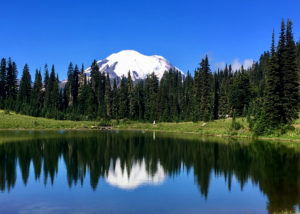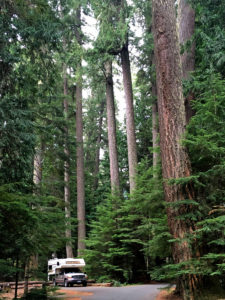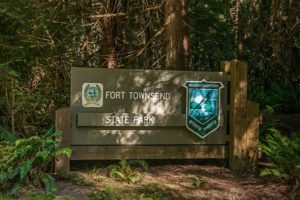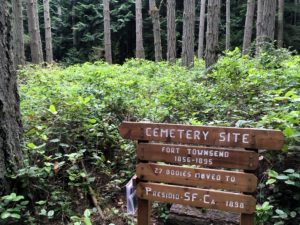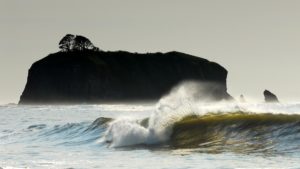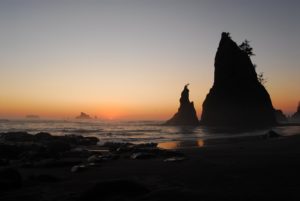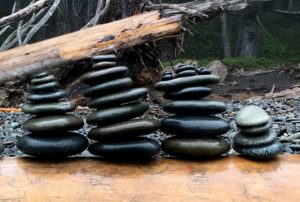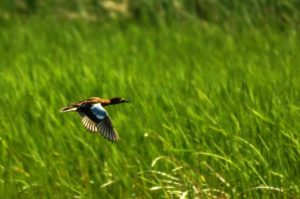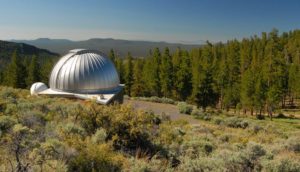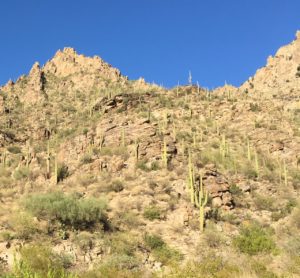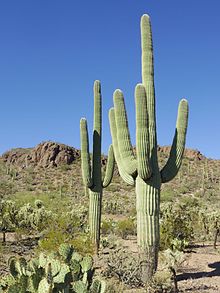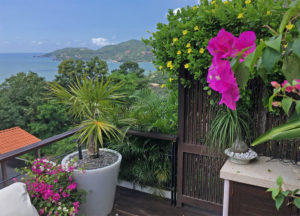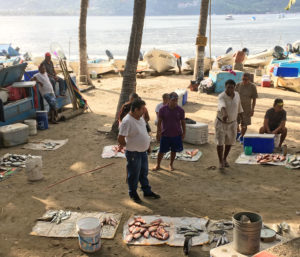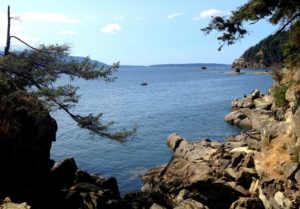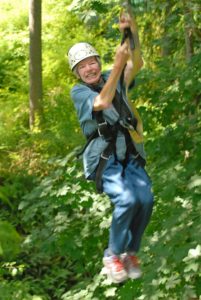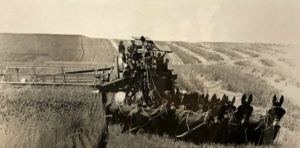
Mule team harvesting wheat on the Francis Stubblefield ranch, c. 1914. Photo of display by Roni McFadden
When in Eastern Washington recently, we visited the 17-acre Fort Walla Walla Museum, an impressive collection of fascinating relics of the area’s history.
Beginning our tour in the main building, the spacious Entrance Hall, bronzes by Walla Walla native, David Manual are on prominent display. Then, an actual stagecoach stirs the imagination as we compare the difference with today’s cushy transportation. The Entrance Hall features rotating exhibits including fur trade and gold rush artifacts. I especially enjoyed an exhibit of antique toys, and was fascinated by the model train set.. Also featured in the Entrance Hall were scheduled enactments of local historical people. The Museum Store features books on regional history and culture, beautiful arts and crafts, and an assortment of locally produced gourmet foods.
We continued our tour to explore four more exhibits. Exhibit Hall 2 houses one of the nation’s largest collections of horse-era agricultural equipment, including pre-combine stationary threshing equipment used in the early 1900s. This hall also features a cook-house where cooks prepared 5,000- to 6,000-calorie meals per day for the hardworking farmhands.
Exhibit Hall 3 displays the combine, the next technological development in horse-era agriculture. I was amazed at the 1920s life-size 33-mule team model hitched to a wooden combine. It’s hard to imagine getting 33 mules all pointed in the right direction, harnessed and hitched, and then driven by just one man.
Exhibit Hall 4 features wagons and other vehicles used in the early 1900s, including a doctor’s buggy, and even a “sports” buggy. This hall contains a branding iron collection, including many of the oldest cattle brands in Washington.
Exhibit Hall 5’s entrance doors were once a part of the 1908 Walla Walla fire station. Among other displays is a horse-drawn steam pumper, used until the Walla Walla fire station acquired its motorized fire engines.
We walked down a path surrounded by grassy hills to the Pioneer Village with 17 more buildings to explore. We wandered from the blockhouse to tiny cabins that sometimes housed families with many as 10 children, to school rooms, to various shops vital to the needs of a pioneer settlement.
Fort Walla Walla Museum brings history to life. It’s one of the most complete museums I have ever seen. It occupies part of the 640-acre military reservation that traces its origins to an early pioneer society that formed in 1886. If you’re in the Walla Walla area, I highly recommend visiting this museum.


